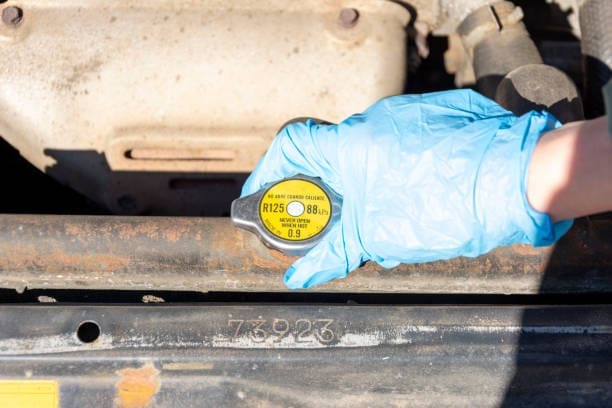Four Important Warning Lights to Familiarize Yourself With on your vehicle dashboard are crucial for maintaining safety, preventing potential damage, and ensuring your vehicle operates smoothly. Modern vehicles are equipped with a variety of warning lights that indicate different issues or conditions that require attention. In this comprehensive guide, we will explore four of the most important warning lights you should be familiar with, their meanings, potential causes, and appropriate actions to take.
Check Engine Light
Table of Contents
Toggle
The Check Engine Light (CEL) is perhaps the most well-known and commonly encountered warning light. It typically illuminates in yellow or orange and resembles an engine outline or the words “Check Engine.” Here’s what you need to know about it:
1.1 Meaning: The Check Engine Light indicates that the vehicle’s onboard diagnostics system (OBD-II) has detected a problem related to the engine, emissions system, or other critical components.
1.2 Possible Causes: The causes can vary widely, ranging from a loose gas cap or faulty sensor to more serious issues like engine misfire or catalytic converter failure.
1.3 Action: When the Check Engine Light comes on, it’s essential to:
- Check if the light is flashing, which indicates a severe problem requiring immediate attention.
- Use an OBD-II scanner to retrieve trouble codes and diagnose the issue.
- Depending on the severity, you may need to seek professional mechanic assistance to address the underlying problem.
Battery Warning Light
The Battery Warning Light appears as a rectangular symbol resembling a battery, often in red or amber. Here’s what you should know about it:
2.1 Meaning: This light indicates a problem with the vehicle’s charging system, typically the battery or alternator.
2.2 Possible Causes: Causes may include a failing battery, faulty alternator, loose or corroded battery terminals, or broken alternator belts.
2.3 Action: When the Battery Warning Light comes on:
- Avoid turning off the engine if possible, as you may not be able to restart it.
- Check the battery terminals for corrosion or looseness.
- If the problem persists, have the battery and charging system inspected by a qualified technician to prevent potential breakdowns.
Brake System Warning Light
The Brake System Warning Light is usually depicted as “BRAKE” or a circle containing an exclamation mark ( ! ). It indicates issues with the braking system that require immediate attention:
3.1 Meaning: The light may indicate low brake fluid level, brake system malfunction, or worn brake pads.
3.2 Possible Causes: Causes can include brake fluid leaks, worn brake pads, malfunctioning brake sensors, or a problem with the anti-lock braking system (ABS).
3.3 Action: Upon seeing the Brake System Warning Light:
- Check the brake fluid level in the reservoir (consult your owner’s manual for location).
- If the fluid level is low, top it up with the recommended brake fluid.
- If the light remains on after checking fluid levels, have the braking system inspected immediately by a professional technician to ensure safe operation?
Oil Pressure Warning Light

The Oil Pressure Warning Light typically appears as an oil can symbol or the words “OIL” or “PRESS” in red or amber. It signals a drop in oil pressure, which is critical for lubricating and protecting the engine:
4.1 Meaning: The light indicates low oil pressure, which can lead to engine damage if not addressed promptly.
4.2 Possible Causes: Causes include low oil level, oil pump failure, clogged oil filter, or engine oil leaks.
4.3 Action: If the Oil Pressure Warning Light illuminates:
- Immediately pull over to a safe location and turn off the engine.
- Check the engine oil level using the dipstick and add oil if it is low (use the recommended grade).
- If oil levels are adequate and the light persists, do not attempt to restart the engine.
- Contact roadside assistance or a mechanic for further diagnosis and repairs to prevent potential engine damage.
Conclusion
Familiarizing yourself with these four important warning lights can significantly enhance your ability to respond to potential vehicle issues promptly and effectively. Ignoring warning lights can lead to more severe damage, costly repairs, or even unsafe driving conditions. Remember to consult your vehicle’s owner’s manual for specific details on warning lights and actions to take. By staying proactive and addressing warning lights promptly, you can help ensure your vehicle’s safety, reliability, and longevity on the road.



